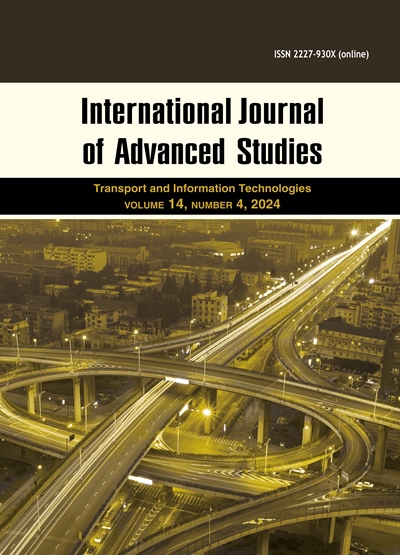ОПЫТ И ПЕРСПЕКТИВЫ РАЗВИТИЯ ТЯЖЕЛОВЕСНОГО ДВИЖЕНИЯ
Аннотация
Состояние вопроса. Статья посвящена обзору опыта и анализу перспектив развития организации тяжеловесного движения. Технология тяжеловесного движения в России – сравнительно «молодая» и имеет ряд особенностей. Актуальность темы связана с систематизацией имеющегося у ОАО «РЖД» опыта организации тяжеловесного движения на различных полигонах, и определяется необходимостью выявления особенностей развития указанной технологии на ближайшую перспективу.
Цель: охарактеризовать текущее состояние развития технологии тяжеловесного движения с учетом исторического и концептуального аспектов организации тяжеловесного движения в нашей стране.
Методы. Использовались методы сравнительного анализа, логистики и нормирования эксплуатационной работы железных дорог.
Результаты. Дана характеристика особенностей, опыта и перспектив развития тяжеловесного движения. Отмечены ключевые тенденции и треки дальнейшего совершенствования технологии. Сформулированы некоторые атрибуты будущего целевого образа тяжеловесной железной дороги.
Заключение. Показаны ключевые особенности и сложности организации тяжеловесного движения в России. Отмечено, что потенциал тяжеловесной логистики сегодня на полигонах ОАО «РЖД» до сих пор не раскрыт в полной мере.
EDN: QBOQXL
Скачивания
Литература
Список литературы
IHHA (www.ihha.net); International Railway Journal. 2024. №1. P. 14-16.
International union of railways. URL: https://uic.org/
Мировой опыт и российские особенности // Гудок. https://gudok.ru/newspaper/?ID=1433605
Иванкин П. Исторические хроники // Гудок. https://1520international.com/content/2023/noyabr-2023/istoricheskie-khroniki-pavel-ivankin-o-razvitii-gruzovykh-perevozok-/
Тяжеловесное движение: экономическая оценка тягового бизнес-ресурса: монография / С. В. Рачек, А. С. Колышев, Е. В. Конышева. Екатеринбург: УрГУПС, 2020. 133 с.
Колышев А. С. Экономическая оценка работы тягового ресурса в условиях тяжеловесного движения: дис. канд. экон. наук. Санкт-Петербург, 2019. 182 с.
В РЖД подвели итоги первых 9 месяцев 2024 года // УСГК. https://usgk.ru/articles/179
Стратегия развития транспортного машиностроения Российской Федерации на период до 2030 года / утв. распоряжением Правительства РФ от 17 августа 2017 года № 1756-р. http://government.ru/docs/28874/
Dave van der Meulen. Railway globalization and heavy haul // Proceedings of the International Heavy Haul Association Specialist Technical Session, Kiruna, Sweden: International Heavy Haul Association, pp. 329-338.
Лапидус Б. М., Мачерет Д. А. Эволюция железнодорож¬ного транспорта на пути к инновационному ренессансу // Вестник ВНИИЖТ. 2011. № 1. С. 3-14.
Мугинштейн Л. А., Шенфельд К. П. Развитие тяжело¬весного движения грузовых поездов. М.: Интекст, 2011. 76 с.
Лапидус Б. М. Развитие тяжеловесного движения на рос¬сийских железных дорогах. Опыт, проблемы, решения // Бюлле¬тень ОСЖД. 2013. № 1/2. С. 8-15.
Беседин И. С., Мугинштейн Л. А., Захаров С. М. Развитие тяжеловесного движения на железных дорогах мира // Железные дороги мира. 2006. № 9. С. 39-48.
Захаров С. М., Шенфельд К. П. Развитие тяжеловесного движения в мире // Вестник ВНИИЖТ. 2013. № 4. С. 9-18.
Шенфельд К. П. О показателях качества организации перевозочного процесса // Железнодорожный транспорт. 2011. № 3. С. 64–67.
Скутина О. Л. Особенности эксплуатации железнодорожного пути на участках тяжеловесного движения поездов // Современные технологии. Системный анализ. Моделирование. 2020. № 4 (68). С. 76–85. https://doi.org/10.26731/1813-9108.2020.4(68).76-85
Скорлыгина Н. Бескрайняя гладь поезда: ОАО «РЖД» уплотняет движение на БАМе и Транссибе // КоммерсантЪ. Железнодорожный транспорт. Приложение №159 от 03.09.2024. С. 4. https://www.kommersant.ru/doc/6904869
Инновационные вагоны и мощь локомотивов // Гудок. https://gudok.ru/content/freighttrans/1617808/
Эрлих Н.В., Русаков В.О. Оценка общей продолжительности нахождения тяжеловесных поездов на технической станции и на железнодорожном участке // Вестник транспорта Поволжья. 2014. № 6 (48). С. 53-60.
Эрлих Н. В., Русаков В. О. Экономическая эффективность организации тяжеловесного движения на однопутных железнодорожных участках // Вестник транспорта Поволжья. 2015. № 2 (50). С. 68-73.
References
IHHA (www.ihha.net); International Railway Journal, 2024, no. 1, p. 14-16.
International union of railways. URL: https://uic.org/
World experience and Russian peculiarities. Gudok. https://gudok.ru/newspaper/?ID=1433605.
Ivankin P. Historical chronicles. Gudok. https://1520international.com/content/2023/noyabr-2023/istoricheskie-khroniki-pavel-ivankin-o-razvitii-gruzovykh-perevozok-/.
Heavy-weight traffic: economic evaluation of the traction business resource: a monograph / S. V. Rachek, A. S. Kolyshev, E. V. Konysheva. Ekaterinburg: UrGUPS, 2020, 133 p.
Kolyshev A. S. Economic evaluation of traction resource operation under heavy-weight traffic conditions: Cand. Sci. Econ. St. Petersburg, 2019, 182 p.
Russian Railways summarized the results of the first 9 months of 2024. USGK. https://usgk.ru/articles/179
Strategy for the development of transport machine building of the Russian Federation for the period up to 2030 / approved by the order of the Government of the Russian Federation on August 17, 2017 № 1756-r. http://government.ru/docs/28874/
Dave van der Meulen. Railway globalization and heavy haul. Proceedings of the International Heavy Haul Association Specialist Technical Session, Kiruna, Sweden: International Heavy Haul Association, pp. 329-338.
Lapidus B. M. M., Macheret D. A. Evolution of Railway Transportation on the Way to Innovation Renaissance. Vestnik VNIIZhT, 2011, no. 1, pp. 3-14.
Muginstein L. A., Shenfeld K. P. Development of heavy-weight freight train traffic. Moscow: Intext, 2011, 76 p.
Lapidus B. M. Development of heavy-weight traffic on the Russian railroads. Experience, problems, solutions. OSJD Bulletin, 2013, no. 1/2, pp. 8-15.
Besedin I. S., Muginstein L. A., Zakharov S. M. Development of heavy-weight traffic on the world railroads. Railways of the World, 2006, no. 9, pp. 39-48.
Zakharov S. M., Shenfeld K. P. Development of heavy-weight traffic in the world. Vestnik VNIIZhT, 2013, no. 4, pp. 9-18.
Shenfeld, K. P. About the quality indicators of the transportation process organization. Rail Transport, 2011, no. 3, pp. 64-67.
Skutina O. L. Features of railroad track operation on the sections of heavy-weight train traffic. Modern technologies. System analysis. Modeling, 2020, no. 4 (68), pp. 76-85. https://doi.org/10.26731/1813-9108.2020.4(68).76-85
Skorlygina N. Boundless smoothness of the train: JSC “Russian Railways” compacts traffic on BAM and Transsib. Kommersant. Railway Transport. Appendix № 159, 03.09.2024, p. 4. https://www.kommersant.ru/doc/6904869
Innovative cars and the power of locomotives. Gudok. https://gudok.ru/content/freighttrans/1617808/.
Erlich N.V., Rusakov V.O. Estimation of the total duration of heavy-weight trains stay at the technical station and on the railway section. Vestnik of Volga Region Transport, 2014, no. 6 (48), pp. 53-60.
Erlich N.V., Rusakov V.O. Economic efficiency of heavy-weight traffic organization on single-track railway sections. Bulletin of Volga Region Transport, 2015, no. 2 (50), pp. 68-73.
Copyright (c) 2024 Oksana D. Pokrovskaya, Oleg V. Shugaev

Это произведение доступно по лицензии Creative Commons «Attribution-NonCommercial-NoDerivatives» («Атрибуция — Некоммерческое использование — Без производных произведений») 4.0 Всемирная.








































